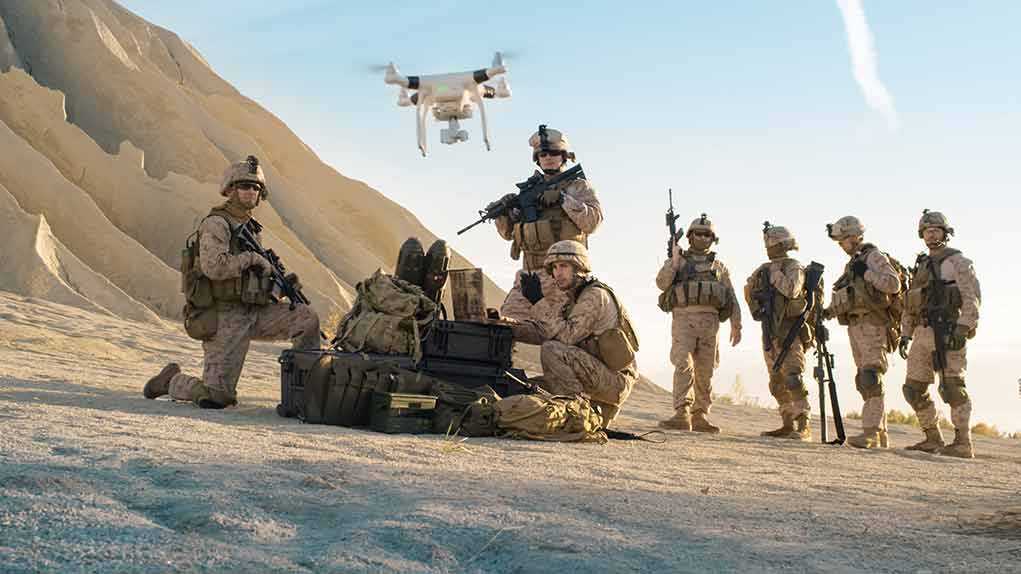
China’s new mosquito-sized drones, smaller than a penny and nearly undetectable, could soon be infiltrating American facilities and spying on our critical infrastructure while remaining completely invisible to conventional security systems.
Key Takeaways
- China’s military university in Hunan province has developed a fully operational drone only 2 cm long, 3 cm wide, and weighing less than 0.2 grams – approximately the size of a mosquito.
- These micro-drones are specifically designed for covert battlefield reconnaissance and intelligence gathering in areas inaccessible to larger surveillance equipment.
- The technology represents a significant advancement in China’s asymmetric warfare capabilities, potentially allowing them to conduct espionage operations with virtually undetectable equipment.
- Under President Trump’s leadership, America faces the challenge of countering these technological threats while China continues aggressive development of military technology aimed at altering the power balance in the Indo-Pacific region.
China’s Microscopic Military Innovation
China’s National University of Defense Technology has unveiled a revolutionary surveillance drone that measures just 2 centimeters long and 3 centimeters wide while weighing less than 0.2 grams. This technological marvel, approximately the size of a mosquito, represents a new frontier in military reconnaissance capabilities. The drone’s minuscule dimensions enable it to access spaces that conventional surveillance equipment cannot reach, making it an invaluable asset for intelligence gathering operations. Developed in a military laboratory in Hunan province, this micro-drone showcases China’s determination to gain technological superiority in asymmetric warfare capabilities.
“This type of micro-robot is especially suitable for special missions, such as information reconnaissance, on the battlefield,” said Liang Hexiang, a researcher involved with the project.
Strategic Military Applications
The mosquito-sized drone’s military applications extend beyond simple reconnaissance. Chinese military sources indicate the technology could be deployed for covert surveillance operations behind enemy lines, inside sensitive facilities, or even for monitoring American interests globally. The four-winged prototype, controllable via smartphone, represents a significant leap in miniaturization technology that includes sophisticated sensors, cameras, and communications equipment packed into an almost imperceptible frame. While analysts debate the immediate battlefield impact due to potential range and battery limitations, the stealth capabilities of these micro-drones make them particularly concerning for security experts.
“If China is able to produce mosquito-sized drones, it would likely be interested in using them for various intelligence, surveillance and reconnaissance tasks, especially in places that larger drones struggle to access, such as indoor areas,” said Timothy Heath, senior international defense researcher.
Global Competition in Micro-Robotics
China’s development of this mosquito-sized drone occurs amid a global race for micro-robotics supremacy. Similar research efforts are underway in various countries, including Harvard University’s RoboBee project and the widely deployed Black Hornet micro-drones used by several military forces. The Black Hornet 4, while considerably larger than China’s mosquito drone, demonstrates the potential trajectory of this technology – capable of transmitting thermal images across distances up to 2 miles while remaining airborne for over 30 minutes. The U.S. Air Force reportedly was working on comparable technology in 2021, though updates on that program have been suspiciously absent from public discourse.
“Here in my hand is a mosquito-like type of robot. Miniature bionic robots like this one are especially suited to information reconnaissance and special missions on the battlefield,” stated Liang Hexiang, showcasing the drone.
America’s China Challenge Under Trump
President Trump’s administration faces the growing challenge of China’s technological advancements amid Beijing’s broader strategic ambitions. The development of these microscopic surveillance drones represents just one aspect of China’s comprehensive effort to achieve military dominance, alongside intellectual property theft, unfair trade practices, and aggressive posturing toward Taiwan. Trump’s previous tough stance on China, including implementing tariffs and addressing human rights violations, established a framework for confronting these challenges. Current Defense Secretary Pete Hegseth has recognized the severity of the situation, particularly regarding Taiwan’s security – a critical partner hosting Taiwan Semiconductor Manufacturing Company, which has announced significant investments in American manufacturing.
“There’s no reason to sugar coat it. The threat China poses is real, and it could be imminent. It has to be clear to all that Beijing is credibly preparing to potentially use military force to alter the balance of power in the Indo Pacific,” said Pete Hegseth, Secretary of Defense.
Privacy and Security Implications
The emergence of virtually undetectable surveillance drones raises profound privacy and security concerns for American citizens and infrastructure. These mosquito-sized drones could potentially conduct espionage operations against government facilities, military installations, or private businesses while remaining completely unnoticed. The technology’s dual-use nature means similar devices could be employed for legitimate search and rescue operations or medical applications, but in the hands of adversarial nations like China, they represent a serious security threat. As China continues pursuing its strategy of asymmetric warfare capabilities, America must develop both defensive countermeasures and competitive technologies to maintain technological superiority in this emerging domain.

















